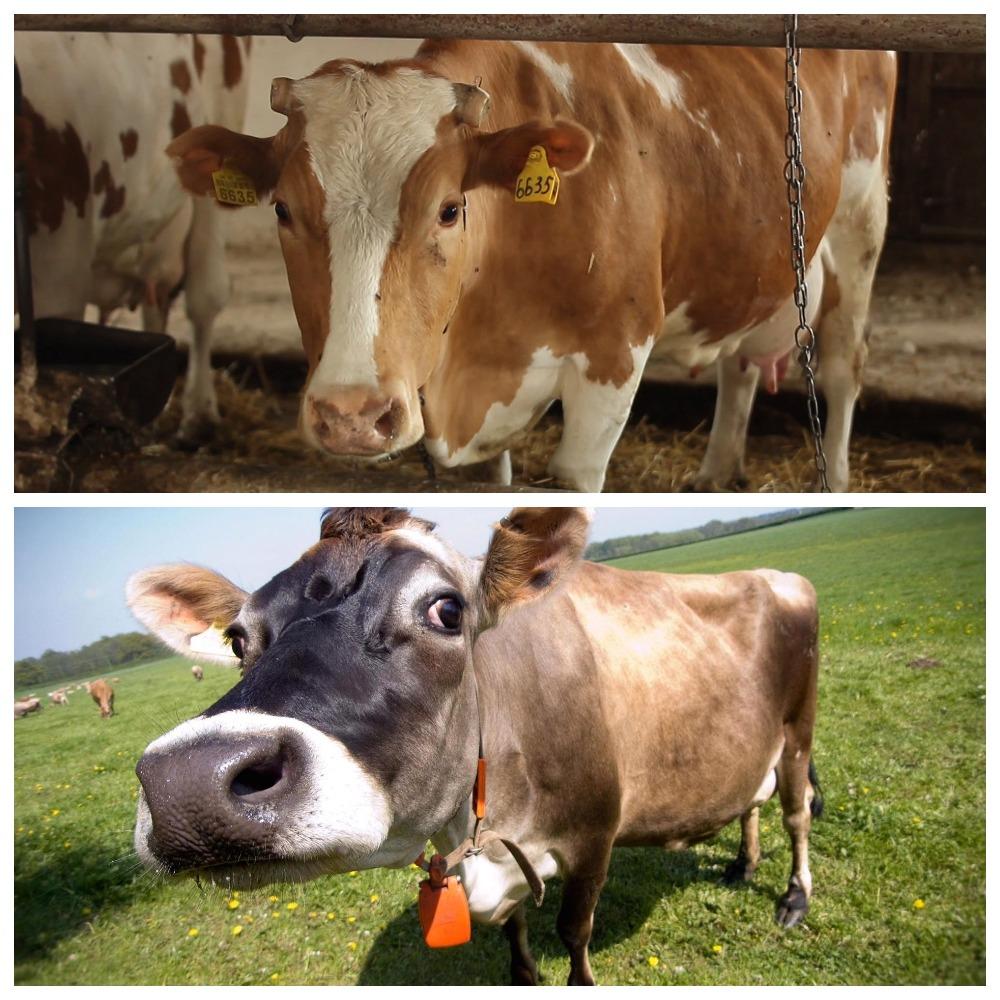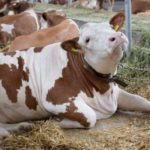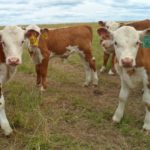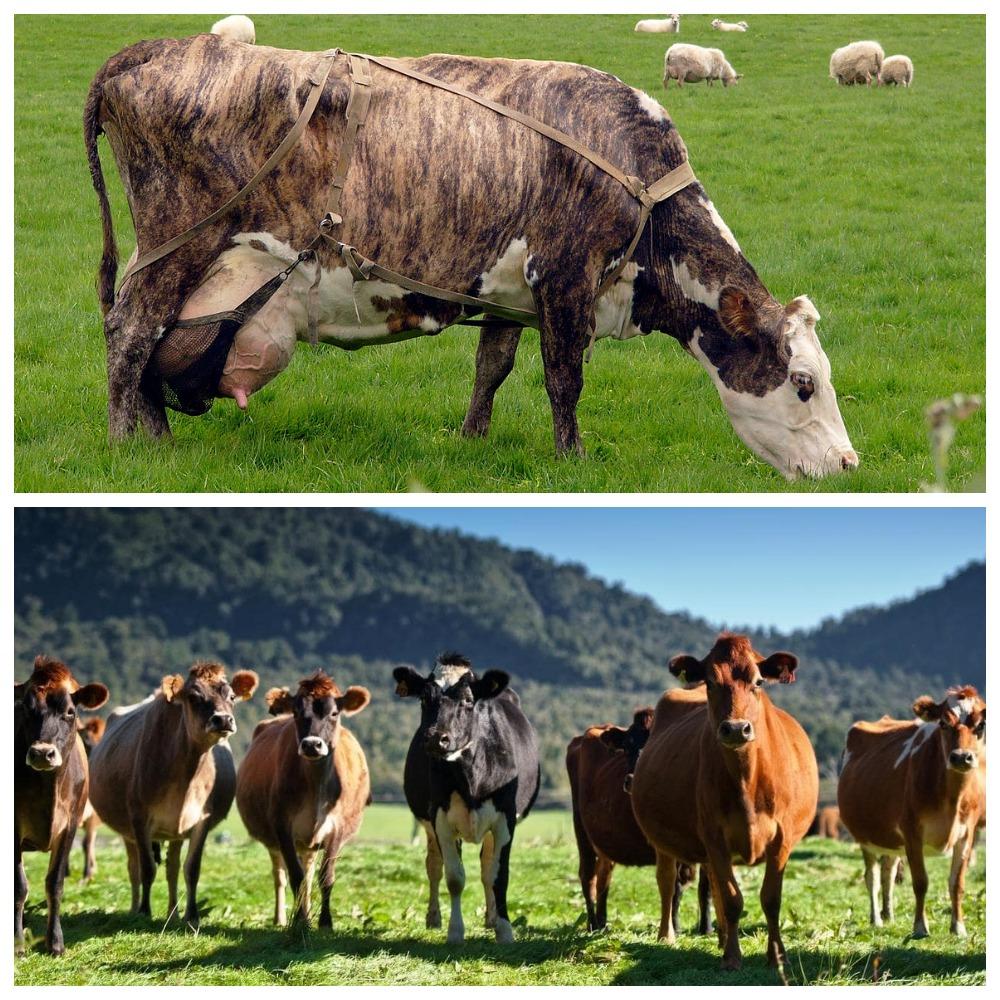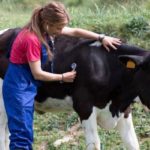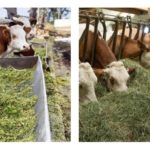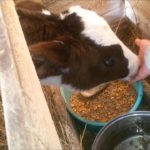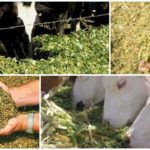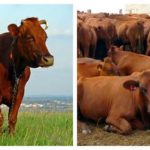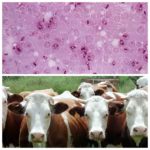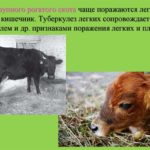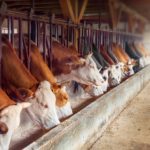To make ranching cattle successful and profitable, new breeders need to prepare ahead of time. This applies to the creation of the necessary living conditions for livestock, the procurement of feed, and the specialized training of farmers themselves, especially if they did not have any agricultural experience before. Only with an integrated approach will it be possible to successfully raise cattle.
Dairy farm
Having chosen the dairy direction of cattle breeding, the farmer should focus on the following factors:
- Selection of the most productive breed of dairy cattle, suitable for the climate of the region where the farm is located, and meeting the tasks assigned to the farm.
- High milk yield is the most important characteristic of a dairy herd.
- Active reproduction.
- Endurance, minimal tendency to disease.
- Specially prepared room.
- Feed supply systems and hearths.
- Milking machines.
- Milk storage systems.
- Heaters for barns and calf barns.
- Devices for removing manure and cleaning premises.
- Premises for storing feed stock.
- Silo towers.
- Walking for grazing livestock in warm weather.
These conditions are the basis for a successful business or the creation of reliable support in the form of a well-organized subsidiary farm. However, a farmer cannot do without professional training in any case. Even if he did not study to become a livestock breeder, the availability of printed and electronic information will help him in his endeavors and will become the basis for success.
Meat farm
To create a meat farm, a future livestock breeder will need almost the same things as to breed dairy cattle. However, the specifics of the process will require the novice farmer to select a meat breed suitable for a particular area, as well as the availability of additional premises for keeping cows with calves, grown-up and replacement livestock, as well as animals put for fattening.
It is also important to promptly resolve the issue of slaughtering cattle and selling products, as well as to obtain at least basic knowledge about the breeds used. This will help avoid many complications, illness and loss of livestock, as well as financial losses and emotional turmoil.
Basic requirements for the premises
The first thing a beginning farmer should have is a cowshed. Its area depends on the number of animals, and the number of premises depends on the type of activity.
For example, keeping breeding stock for the sale of young animals will bring a lot of income, but will also require costs, because each breed must be kept in isolation and be separated from other animals so as not to produce unwanted hybrids.
Russia is a country with a rather harsh climate, so it is necessary to provide comfortable living conditions for cows and calves in winter. To do this, barns must have heating devices, heaters that provide optimal temperatures depending on the time of year. Also, barns should be simple and convenient for cleaning, because cleanliness is one of the important factors in the prevention of livestock diseases.
Necessary equipment
Each farm, in addition to special premises, must have the following equipment and amenities:
- Electricity supply. If the area where the barn is located experiences frequent power outages or natural disasters, it is necessary to have a backup generator. This will protect animals, especially small calves and pregnant cows, from freezing in the event of a sudden loss of nutrition.
- Water supply. This is important, because in addition to providing drinking water, it is necessary to care for the animals, clean them, wash the premises, and keep milk containers, feeders and other equipment clean.
- Milking machines.
- Milk containers for collecting and storing the product.
- Feeders, feed containers.
- Dispensing devices.
- Devices for cleaning premises.
- Stall equipment.
- Accessories and clothing for service personnel.
- First aid kit for livestock.
- First aid kit for people.
- External and internal thermometers.
- Silos or pits.
In addition, in different cases other additional equipment, instruments and devices may be required.
Recruitment
For a farm with a large size and number of livestock, it is highly desirable to have your own veterinarian. This is important if the enterprise is located remotely and calling a doctor will be difficult. Its presence will save the farmer from dozens of cases of disease in livestock, and will also help during calving.
Each farm must have the following staff available:
- Korovnits.
- Calf sheds.
- Cleaners.
- Milk collectors.
- Milkmaid.
- Support workers and so on.
In addition, it is important to have a professionally trained and experienced management team. If the owner can manage the farm, then complex accounting must be handled by an experienced specialist. If there are a large number of employees, a personnel department will be required, and when breeding purebred livestock for sale of young stock, a specialist in this field will be required.
Further selection of employees is related to the characteristics and size of the farm and its profile. These could be milkmaids at specialized dairy production facilities or full-time butchers, who are needed only if livestock will be slaughtered for meat directly on site.
Needs of purchased livestock
Newly acquired animals need to undergo quarantine; they must be placed in comfortable, warm, lighted, clean and ventilated premises. Cows and bulls need nutritious, balanced food, sufficient clean drinking water and a calm, quiet environment.
Purchased cattle may be nervous if they have arrived from afar.At first, this may affect the behavior of animals, as well as appetite, sleep, and milk production. While they are adapting, they need to be kept quiet, not disturbed unless absolutely necessary, and not kept together with other cows, especially animals with aggressive behavior.
In order for cattle to feel comfortable, reproduce, produce milk and increase live weight, efforts must be made. In addition to living in a dry, clean and warm room, receiving quality feed and plenty of water, cows need the love and attention of people. It has long been known that music played in the barn increases milk yield and promotes stronger immunity in calves. So the farmer will also have to learn animal psychology if he wants to succeed in animal husbandry.
Diet
Cattle are fed abundantly, but not overfed. For the most part, the food consists of good hay, fresh grass in the warm season, if the cows are grazed on a range or pasture, succulent feed and concentrated products, and silage.
For the most part, animal nutrition is monotonous, often consisting of hay, silage, root crops with the addition of animal feed. If the percentage of the latter in the menu is high, the cattle need to drink more water to avoid digestive problems.
Sales of products
Cattle can be raised for meat or dairy products for personal use or for sale. In the first case, up to a dozen heads are kept, putting young stock under the knife at 8 months to 1.5 years, or using a dairy herd with replacement animals.In the second case, a profit will come from a meat farm of substantial size, which will regularly supply products to the market.
It is more profitable to sell the resulting meat, milk and other products yourself. You can do this at a farmer's market or open your own store, which involves a different level of expenses.
You can also donate livestock and dairy products in bulk, but cattle are accepted “live weight”, which provides for a minimum payment. Milk is also bought much cheaper than when sold at the market or in a store. But at the same time, the manufacturer avoids complications, including costs for slaughter, travel, spending time selling food, market collection and so on. Which option to choose is a personal matter for the farmer. He must soberly assess the benefits and disadvantages of the options and choose the one that is closer to the manufacturer.

